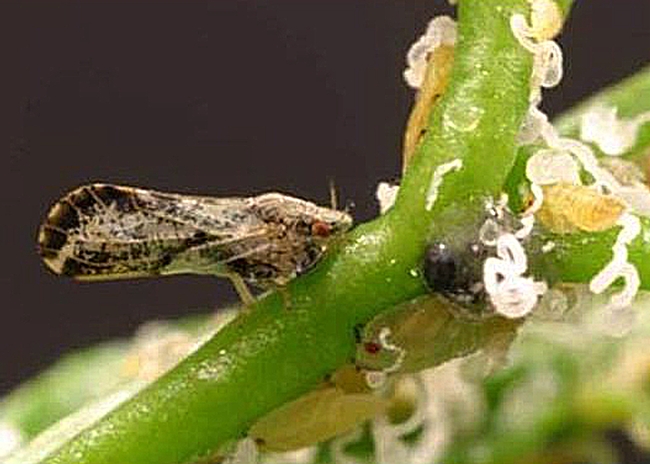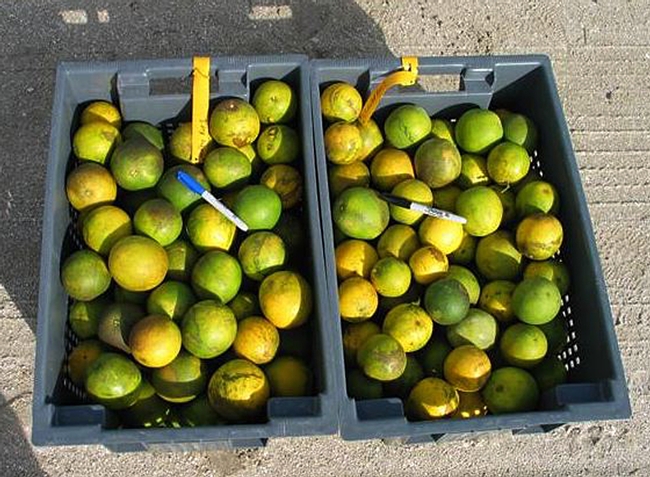The public, says entomologist Kris Godfrey, needs to become more aware of the threat of invasive species.
And, she adds, we need to educate people and organizations about the incoming pests and pests that are already here.
With that in mind, she's coordinating an all-day conference, themed “Educating the Public about New Invasive Species Threatening California’s Plant Ecosystems,” set Tuesday, April 24 in the UC Davis Conference Center.
The goal? "To bring together biologists, social scientists, and communication experts to discuss how to educate all segments of society about the threat of invasive species and how to assist in their exclusion and detection,” said Godfrey, an associate project scientist with the Contained Research Facility at UC Davis.
Godfrey, formerly with the California Department of Food and Agriculture, says conference attendees will learn about developing and delivering effective and consistent messages about invasive species to a variety of audiences. They also will learn how to access the resources available to conduct effective outreach programs on invasive species.
Among the pests to be discussed: the golden spotted oak borer, Asian citrus psyllid, European grapevine moth, Japanese dodder, sudden oak death, and zebra and quagga mussels.
Some of the speakers:
- "Predicting the Next Pest Invaders and How To Prevent Their Introduction," Joseph DiTomaso, UC Davis Department of Plant Sciences
- “New Pest Plants,” Doug Johnson, California Invasive Plant Council, Berkeley
- “New Arthropod Pests,” Kevin Hoffman, California Department of Food and Agriculture, Sacramento ?
- ”New Plant Pathogens,” Richard Bostock, UC Davis Department of Plant Pathology
- ”Zebra and Quagga Mussels,” Ted Grosholz, UC Davis Department of Environmental Science and Policy???
- “European Grapevine Moth,” Lucia Varela, UC Cooperative Extension, Sonoma County?
- ”Asian Citrus Psyllid/Huanglongbing,” Beth Grafton-Cardwell, UC Riverside Department of Entomology
- “Sudden Oak Death and Buy-Where-You-Burn Campaigns,” Janice Alexander, UC Cooperative Extension, Marin County, Novato.
- “Japanese Dodder, “Ramona Saunders, Sacramento County Agricultural Commissioner’s Office??
- “Newspaper Perspective,” Matt Weiser, Sacramento Bee.
More information, including the full list of speakers, is available at http://crf.ucdavis.edu. Conference registration is taking place online at https://registration.ucdavis.edu. Bin at right shows Huanglongbing (HLB) symptoms caused by Asian citrus psyllid. At left: normal fruit.(Photo by S. Halbert, Florida Department of Agriculture and Consumer Services). For additional information, contact Kris Godfrey at kegodfrey@ucdavis.edu or (530) 754 2104.
The conference, supported with a grant from the UC Davis College of Agricultural and Environmental Sciences’ 2011 Spring Programmatic Initiative, is a cooperative project of the UC Davis College of Agricultural and Environmental Sciences, the UC Davis departments of Plant Pathology, Entomology, Plant Sciences, and Food Science and Technology, the California Center for Urban Horticulture at UC Davis, the UC Statewide Integrated Pest Management Program, and the UC Riverside Department of Entomology.
A side note: take a look at the oranges below and see the damage that the Asian citrus psyllid causes. The bin on the right shows small lopsided fruit, typical of HLB infection. The bin on the left shows normal-sized fruit. These photos were taken in Florida.
Attached Images:

Asian citrus psyllid is an invasive pest. (Photo by M. E. Rogers, University of Florida)

Bin at right shows Huanglongbing (HLB) symptoms caused by Asian citrus psyllid. At left: normal fruit. (Photo by S. E. Halbert, Florida Department of Agriculture and Consumer Services)